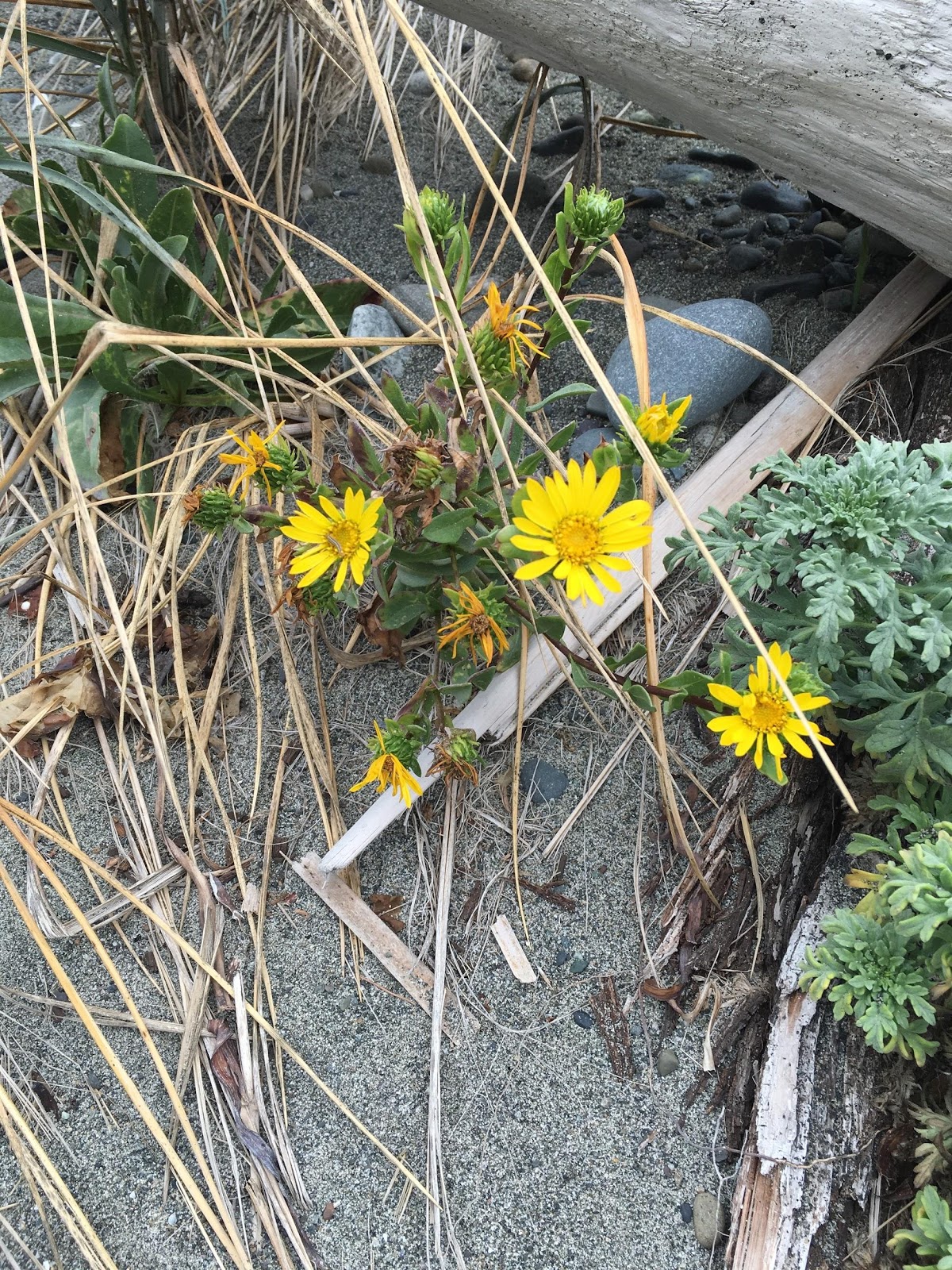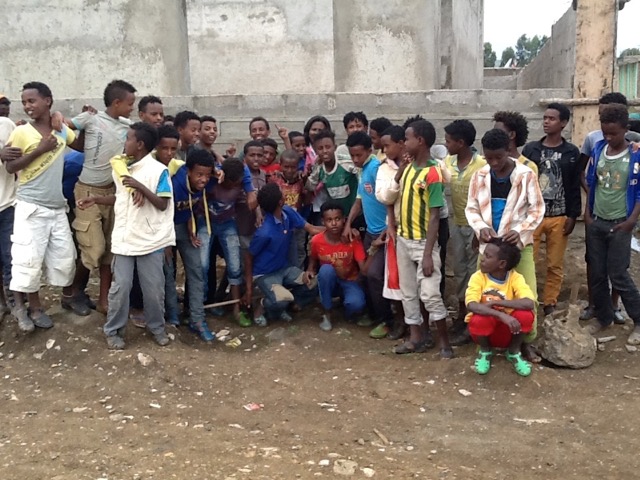Harold B. Allen Award Recipient: Karla Stone, 2016 Harold B. Allen award winner, shares insight on navigating the challenges that arise in teaching.
Recently, one of my undergraduate students in a class titled Exploring the Teaching Profession asked, with great sincerity, “Why teach?” “No really,” he continued, “why should we become teachers?” Although we had spent the entire fall semester exploring this question in great depth and from multiple angles, the confirmation of Betsy DeVos as Secretary of Education had created a new urgency to this question. Admittedly, the anguish in his voice gave me pause, but what ensued was an honest, genuine conversation in the class about the role teachers can play in creating humanizing spaces where students feel empowered. I have spent a lot of time reflecting on the importance of these spaces for learning, especially for immigrant and refugee students, and the role of teachers in pushing back against dehumanizing practices and the “uncritical appropriation of methods, materials, [and] curricula” (Bartolome, 1994, p.177). The work is not easy, and requires strong collaborations and a healthy dose of self-care in order to keep hope alive. As William Ayers (2010) writes in his graphic text, To Teach. A Journey in Comics, “To name oneself as a teacher is to live with one foot in the muck of the world as we find it – with its conventional patterns and received wisdom – and the other foot striding toward a world that could be but isn’t yet” (p. 11). I frequently find solace in the wisdom of William Ayers and other progressive writers and practitioners, but more importantly find strength and inspiration from the words and actions of many mentors; colleagues, dear friends, and yes, yoga teachers.
It’s Yoga Practice, Not Yoga Perfect
On a daily basis, teaching provides opportunities for reflection and refining our practice. We owe it to our students to use our pedagogical knowledge and power to meet them where they are and give them the supports and tools to help them reach their potential and soar. In 2012, Lisa Delpit wrote of being “angry at the machinations of those who, with so little knowledge of learning, of teachers, or of children, are twisting the life out of schools” (p. xv). She offers up the need for teachers to be warm demanders who “expect a great deal of their students, convince them of their own brilliance, and help them reach their potential in a disciplined and structured environment” (p. 76). That structure need not be rigid or limiting, however. Referencing Kumaravadivelu, Cushing-Leubner and Bigelow (2014) write, it is “time for language teachers to regain their capacity as instructional decision makers for their students’ learning and for learners of English to be given the opportunity to become autonomous” (p. 248). Just like in yoga, where the teacher offers up the sequence of poses, but there is always an encouragement of individual autonomy in the practice.
Language learning, too, requires a willingness to be in a state of constant practice, but also demands some autonomy. I recently had the opportunity to be reminded of this first hand as part of a University of Minnesota College of Education and Human Development delegation to Cuba. I knew just enough Spanish to experience complete exhaustion everyday (much like our students learning English), and had the chance to practice being humble, vulnerable and bold, as hard as that could sometimes be. As language teachers, we are encouragers and facilitators of that practice for our students, and have the responsibility to create spaces where we can make sense of the world together, where translanguaging practices are encouraged – where students are given the autonomy to be architects of their own language use. Language practice, not language perfect.
That Which We Seek, Also Seeks Us
Another lesson from yoga is that sometimes we need to stop trying so hard and to be mindful of what is happening in the moment (often in spite of well-intentioned plans). In teaching, this comes from listening – really listening – to what students are telling us and asking for, and to be willing to become students of ourstudents, to “cultivate a mindset of insatiable curiosity” about them (Aaronson, 2008) p. 67), and to let them know us as real people, too. To do this, we have to be honest, be open, be real…and willing to sometimes admit that we don’t know the answer…yet. And sometimes we have to let some things go. Just like in yoga. As Jonathan Kozol (2007) advises in the epilogue of his Letters to a Young Teacher.
Resist the deadwood of predictability. Embrace the unexpected. Revel in the run-on sentences. Celebrate silliness. Dig deep into the word of whim. Sprinkle your children’s lives, no matter how difficult many of those lives may be, with hundreds of brightly colored seeds of jubilation. Enjoy the wildflowers! (p. 238)

Find genuine joy in the small moments, and share with those around you. Just like in yoga.
A Simple Practice for Complex People
While neither teaching nor yoga may seem like simple practices on the surface, at the core both involve connecting to our humanity and breathing deeply through the challenges. Sometimes, though, the apprehension builds and you just know (as a favorite teacher said during a particularly challenging sequence in class recently), “this is going to suck, but it won’t last forever.” This teacher reminded the class that we came to the mat willingly, and to make the most of the experience. Just like in teaching, when the challenges seem great and the obstacles insurmountable, those are often the moments where the most growth occurs. The moment when we most want to step out is often when we need to redouble our focus. As Jamilah Pitts explains in Don’t Say Nothing (2016), “Teaching as an act of resistance and teaching as an act of healing are not mutually exclusive” (p. 48), and our students are watching us. She writes about the importance of talking about race in schools, emphasizing the need for all of us to listen to and learn from our students, and when we don’t have the words, to say exactly what we are feeling. This is a humanizing practice, and this is why I teach.
So cue the music, roll out the mat, and breathe. Namaste.
De todas las profesiones la de maestro es la que lleva paz en el alma.
Of all the professions, teaching brings peace to the soul.
(Jose Marti, Cuban hero, patriot and poet)
This post is dedicated to the memory of my dear friend Mary Diaz. Her wisdom, candor and genuine care for humanity continues to guide me in spirit.
Aaronson, J. (2008). Knowing students as individuals. In M. Pollock. (Ed.). Everyday anti-racism. Getting real about race in School. New York, NY: The New Press.
Ayers, W. (2010). To teach. The journey, in comics. New York, NY. Teachers College Press.
Delpit, L. (2010). “Multiplication is for white people”. Raising expectations for other people’s children. New York, NY: The New Press.
Bartolome, Lilia I. (1994). Beyond the methods fetish: Toward a humanizing pedagogy. Harvard Educational Review, 64(2), 173-94.
Cushing-Leubner, J., & Bigelow, M. (2014). Principled eclecticism and the holistic approach to language teaching and learning. In S. Çelik (Ed.), Approaches and principles in English as a Foreign Language (EFL) Education (pp. 254-263). Ankara, Turkey: Eğiten. PDF available at http://www.cehd.umn.edu/ci/people/profiles/documents/BigelowPricipledEclecticism.pdf
Kozol, J. (2007). Letters to a young teacher. New York: Crown.
Pitts, J. (2016, Fall). Don’t say nothing. Teaching Tolerance. Number 54, 46-49. Available at http://www.tolerance.org/magazine/tt54-fall-2016/feature/dont-say-nothing






